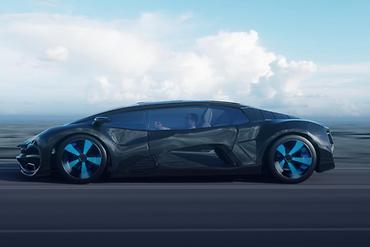
February 21, 2023
3 minutes read
Multi-purpose driving modules
One board, multiple skaters
New mobility is not just limited to the powertrain. New vehicle concepts with a rather limited visibility on todays streetscape will vigorously gain in importance. In particular, these vehicles will consist of a rolling chassis with a changing superstructure. These rolling chassis concepts are also called skateboard architecture, as the driving module is a flat structure that can be driven alone. This skateboard can then pick up various modules depending on the purpose, such as passenger cabins or load modules, and bring them to their destination autonomously. This concept is already known in the transport industry with the swap bodies, which can be transported by different trucks as interchangeable load carriers.
ZF Aftermarket is already working on these concepts and is focusing on the topic of Zero Downtime, whereby the vehicle should not have any unnecessary intermissions. However, the workshop will have to change significantly with such vehicle concepts: The vehicles will drive autonomously to the workshop if necessary, in case remote diagnosis has identified a fault or maintenance requirement.

New tasks for workshops
For workshops, this results in a huge opportunity for 24/7 mobility operations. Not only to maintain the driving modules, but also to change the superstructure, to add and to retire. The role of the workshop is thus changing from a purely repairing entity to an entity that puts things into circulation and actively moderates the new mobility. Due to the increasing digitization of society, location-bound shops and services will also become mobile. With this, a significant upheaval is taking place in the way the economy functions in a society.
Variability through standardization
In the long term, most driving modules will become so-called commodity products – highly standardized and with little opportunity for customization. The central factor will be the harmonization of the interface between the driving module and the body. The benefit of the vehicle concept is defined by the respective structure of the combined vehicle. In the long term, it certainly doesn't matter to the users or the cabin operators which driving module is available to transport the useful body. This anticipation can be compared to the bus axle business.
Today's passengers aren't interested in which axle the bus is equipped with. The decisive factor for the passengers is the fulfillment of their mobility needs, regardless of the axle or drive technology used.
A transitional period in which hybrid solutions with piloting prepare the way to Level 5 automation is conceivable and makes sense.
About the author

Dr. Stephan Melchert
Stephan is Senior Manager Product & Marketing e-Trailer at ZF. As our #zfexpert, we can describe him in just a few words:
“Professional, passionate and with a heart”


